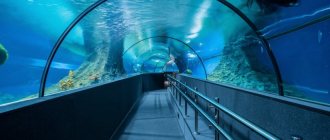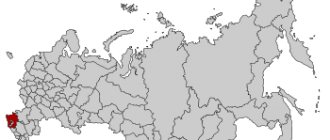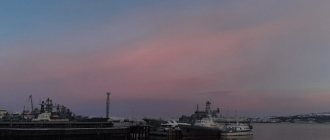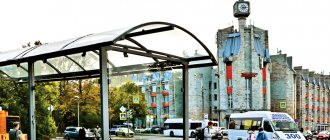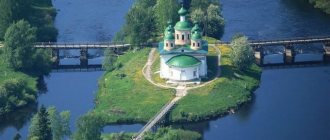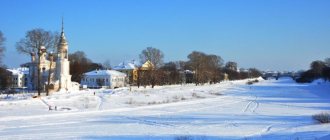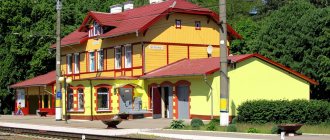"Oblgazeta" continues to tour the northern cities of the Sverdlovsk region to find out how the Urals live far from the center of the region. We have already talked about Sosva, Volchansk and Krasnoturinsk in previous issues. And the other day we stopped in Karpinsk to visit the mayor Andrei KLOPOV. This year, Andrei Alekseevich was re-elected as head of the city for a second term. He told how, thanks to regional subsidies, the appearance of the territory is being transformed and why Karpinsk is considered a talent forge for the entire northern agglomeration.
Breaking the Deadlock
– Andrey Alekseevich, are Karpinsk today and 10 years ago different cities?
- Undoubtedly. It so happened that the city was in a state of stagnation for a long time. But since 2010, changes began. Programs, both regional and federal, have been actively launched. The regional budget now has more opportunities to support municipalities. Housing construction has begun in Karpinsk - something that has not happened for many years. New roads and educational institutions began to appear. These changes occurred during the period when the head of the city was Sergei Bidonko , now the vice-governor of the Sverdlovsk region. And people felt these changes. Then Sergei Yuryevich was promoted, and in 2015 I was elected head of Karpinsk. The task was set not to slow down the pace of development of the territory, even despite the fact that there was a global economic crisis. But with the support of the regional governor Evgeny Kuyvashev and the regional government, we continued to build housing, repair roads, and improve. The city has seriously transformed, and this process continues to this day.
Ice town in Karpinsk on the central square. This year it is dedicated to the work of Pavel Bazhov. Photo: Galina Solovyova
– What does this mean?
– We have launched a project of a guest route through the city center. This is 5 kilometers of road from the entrance on the southern side of Karpinsk to the exit towards Volchansk. The project price is 240 million rubles, work is already underway. The road will be virtually rebuilt; in addition, there will be parking lots, pedestrian zones, modern energy-saving lighting, and a drainage system will be provided. We are also changing communications under the guest route - more than 70 million rubles have been allocated from the regional budget for these purposes. Completion of work is planned for 2022.
This year, a large recreation area, “Komsomolsky Park,” opened in Karpinsk. The improvement took three years, the costs amounted to more than 50 million rubles. Previously, this territory was virtually abandoned. Now there is a health path, playgrounds, walking paths, a powerful lighting system - at night the park is as bright as day. We will soon install outdoor exercise equipment. The park seemed to come to life - now it is a favorite vacation spot for the townspeople.
There are actually a lot of projects. A bridge was built across the Turya River, roads to the villages of Kytlym and Sosnovka. We are preparing for reconstruction the only swimming pool in the city and the park of the former Coal Miners' House of Culture. Investments are being made in the infrastructure of the municipality - again thanks to the support of the governor and the government.
Dossier "OG"
Andrey KLOPOV was born in 1967 in Karpinsk. He graduated from the Yekaterinburg Fire-Technical School and the Ural Law Institute of the Ministry of Internal Affairs of Russia. He headed detachment No. 12 of the State Fire Service of the Ministry of Emergency Situations of Russia in Karpinsk, detachment No. 6 of the Federal Fire Service of the Main Directorate of the Ministry of Emergency Situations of Russia in the Sverdlovsk Region. In 2015, he was elected head of Karpinsk, and this year he was re-elected for a second term. Colonel of the internal service.
Komsomolsky Park in Karpinsk has found a second life after three years of reconstruction. Photo: Galina Solovyova
Karpinsk
(Sverdlovsk region)
OKATO code:
65445
Founded:
1759
Urban settlement since:
1928
City since:
1941 City of regional subordination
The city was formerly called:
| Theological | 1941 |
| Telephone code (reference phone) | |
| 34383***** | 22-5-99 |
Deviation from Moscow time, hours:
2
Geographic latitude:
59°46′
Geographic longitude:
60°00′
Altitude above sea level, meters:
210 Sunrise and sunset times in the city of Karpinsk
Quarter for a new school
– In Karpinsk, as in many other cities in the region, more than half of the budget funds go to the education system. Can we talk about changes in this area?
- Yes. You know that by 2022, by presidential decree, all educational institutions must switch to a single-shift operating mode. We are ready for this. We managed to take part in federal programs and raise funds - with the help of which we converted non-core premises in schools into classrooms. Yuri Biktuganov provided great assistance in this We are currently building a kindergarten school in one of our rural areas. Windows were replaced in city schools, and the roof was replaced at school No. 6. We are launching a pilot project for the reconstruction of a school stadium. A very important issue remains - the construction of a new building for school No. 16 with 850 places. There is a preliminary design, but the site for construction needs to be prepared.
– Are there any difficulties with her?
– School No. 16 is located in the center of Karpinsk; it no longer meets any technical and sanitary requirements for educational institutions today. Obviously it needs to be demolished. There is an opportunity to build a new school next to it, but for this it is necessary to free the adjacent block from uninhabitable buildings in order to begin preparing documents and conducting communications. It’s good that the program for relocating citizens from dilapidated and dilapidated housing has started working again. We are currently building a five-story building with 100 apartments for this category of residents. By November 2022, we must complete it and resettle all residents of this block.
– I remember that in past years the problem of dilapidated and dilapidated housing was solved very actively in Karpinsk. Is there a need for relocation now?
– We have a dilapidated emergency fund. It is necessary to build 35 thousand square meters of housing to eliminate it. But the conditions of the state program have changed and, unfortunately, not in favor of the people. Now citizens who own privatized housing can only receive compensation for it, and this is a pittance. I know that the Legislative Assembly of the region is now discussing how to change the situation. And we are looking forward to a solution. I am very pleased that this year we closed the issue with the unpromising village of Kakvinskie Pechi. We were allocated 15 million rubles from the regional budget to purchase apartments for residents of this village. Now they are already moving to the city. Now we are discussing with our deputies the issue of relocating residents of the village of Knyaspa - people there also live in very difficult conditions.
During the period of Andrei Klopov’s work alone, seven houses were built in Karpinsk for those displaced from dilapidated and dilapidated housing. Photo: Galina Solovyova
Map
| Karpinsk: maps |
Karpinsk: photo from space (Google Maps) Karpinsk: photo from space (Microsoft Virtual Earth)
| Karpinsk. Nearest cities. Distances in km. on the map (in brackets along roads) + direction. Using the hyperlink in the distance , you can get the route (information courtesy of the AutoTransInfo website) | |||
| 1 | Krasnoturinsk | 11 (13) | IN |
| 2 | Volchansk | 19 (25) | WITH |
| 3 | Serov | 36 (46) | SE |
| 4 | Severouralsk | 42 (50) | WITH |
| 5 | Kalya | 51 () | WITH |
| 6 | Cheryomukhovo | 64 () | WITH |
| 7 | Lobva | 71 (76) | SE |
| 8 | New Lyalya | 86 (99) | YU |
| 9 | Ivdel | 104 (124) | WITH |
| 10 | Verkhoturye | 109 (141) | SE |
| 11 | Kachkanar | 122 (194) | YU |
| 12 | Sosva | 123 (126) | SE |
| 13 | Forest | 126 (168) | YU |
| 14 | Nizhnyaya Tura | 128 (167) | YU |
a brief description of
Located on the eastern slope of the Northern Urals, on the river. Turya (Ob basin), 436 km north of Yekaterinburg. Railway station.
Territory (sq. km): 5523
Information about the city of Karpinsk on the Russian Wikipedia site
Historical sketch
Founded in 1759 on the river. Turya as a village in connection with the construction of the Turya iron smelting and ironworks (copper has been smelted since 1774).
After the construction of the temple, consecrated in the name of John the Theologian, the plant began to be called Bogoslovsky, and the village - Bogoslovsk.
Until 1917, one of the largest copper production centers in the Urals. Since 1911, the Bogoslovskoye coal deposit has been developed. Since August 27, 1928, the working settlement of Bogoslovsky. Since 1939, the reconstruction of the Bogoslovsky mines began.
The city of Karpinsk since 1941, was formed by the merger of the villages of Bogoslovsky and Ugolnye Kopi (Ugolny, town since 1928, 20.2 thousand inhabitants, 1939). Named in honor of the geologist, President of the USSR Academy of Sciences, Academician A.P. Karpinsky (1846-1936), a native of the Bogoslovsky plant.
During the Great Patriotic War of 1941-45, new industrial enterprises were built.
Municipal indicators
| Index | 2001 |
| Transport | |
| Length of operational tram tracks (at the end of the year), km | 0 |
| Number of passengers transported by trams per year, million people. | 0 |
Data sources:
- Transport in Russia: Statistical collection. Goskomstat. - M:, 2003. pp. 110, 120
Economy
Plants: ore repair (parts for repairing mining machines), machine-building, electrical machine-building. Yarn factory.
Brown coal mining.
Culture, science, education
Museum of Local Lore.
Museums, galleries, exhibition halls
Karpinsky Museum of Local Lore 624930, Sverdlovsk region, Karpinsk, st. Lesopilnaya, 71 Phone(s): (34383) 3-5062
Architecture, sights
In the historical core of the city, the former Bogoslovsky village, wooden buildings predominate. In new areas there are multi-storey buildings.
| Population by year (thousands of inhabitants) | |||||||
| 1897 | 4.5 | 1996 | 35 | 2008 | 29.1 | 2017 | 27.0 |
| 1931 | 4.9 | 1998 | 34.6 | 2010 | 28.5 | 2018 | 26.6 |
| 1959 | 49.5 | 2000 | 33.8 | 2011 | 29.1 | 2019 | 26.2 |
| 1967 | 41 | 2001 | 33.5 | 2012 | 28.6 | 2020 | 25.9 |
| 1970 | 38.0 | 2003 | 31.2 | 2013 | 28.2 | 2021 | 25.6 |
| 1979 | 36.7 | 2005 | 30.4 | 2014 | 28.1 | ||
| 1989 | 37.0 | 2006 | 30.1 | 2015 | 27.6 | ||
| 1992 | 36.1 | 2007 | 29.6 | 2016 | 27.3 | ||
Shots for neighbors
– Karpinsk is part of the so-called northern agglomeration together with Volchansk, Severouralsk and Krasnoturinsk. Are you friends with your neighbors?
- Certainly. It cannot be any other way for us. Geographically we are very close and economically closely connected. We regularly meet at the council of heads of the northern territories - we go to visit each other, look at projects, and exchange experiences. If a program for the development of the northern agglomeration is adopted at the regional level, which is currently being discussed, we will be happy to participate in it. The main thing is that it takes into account the interests of all municipalities. If we talk specifically about Karpinsk, then our municipality is a source of personnel for neighboring cities. At the Gold of the Northern Urals enterprise in Krasnoturinsk, 40 percent of the workers are Karpinians. At the Volchansky Mechanical Plant, 30 percent of the workers are also our people. They get to work by comfortable buses and private cars. I have been saying for a long time that Karpinsk can be considered as a residential area of the northern agglomeration.
– There is no work in Karpinsk itself?
– Today we have one city-forming enterprise – the Karpinsky Electrical Machine-Building Plant, where 600 people work. The company produces electrical equipment and engines for quarry excavators, brake engines for BELAZ vehicles. The company's portfolio of orders is growing steadily. True, there is not enough working capital and money to modernize production, but the company is working on this problem.
– Do residents have job prospects?
– Karpinsk is the first city in Russia where open-pit coal mining began. And its development directly depends on the development of the mining industry as a whole. We see prospects for the economy in the Dunites of the Northern Urals enterprise, which recently began operating. A dunite deposit has been discovered in the district, and its scale is such that a mining enterprise can operate on it for more than 100 years. Dunite is a high-strength material used in metallurgy. It has fire-resistant properties, and is more powerful than foreign analogues. It also contains proppants - they are used in the oil and gas industry to extract residual oil from fields. As well as magnesium and platinum. In general, a whole bunch of elements that are extremely in demand both in Russia and abroad. Investors are now investing in the company. It will create about 400 jobs.
Another promising area is the Galkinskoye deposit of gold and base metals. Reconnaissance is already underway. And we are going to develop fish farming. Reservoirs with clean water have formed in the exhausted quarries - trout and other fish can be raised there. We are implementing the project with the support of member of the Federation Council, ex-governor of the Sverdlovsk region Eduard Rossel.
Story
Construction of the double-altar cathedral in the future village began in 1767, and 9 years later, upon completion of construction, it received the name Bogoslovsky . The Iron Smelting and Iron Works , launched in 1770, received the same name The settlement formed on this territory began to be called Bogoslovsk , and the entire industrial region received the status and name of the Bogoslovsky mountain district .
Photo source: Karpinsky Museum of Local Lore
In 1875, the mines and then the plant stopped working, which led to the sale of the Bogoslovsky mining district into private hands. “Private hands” became S.D. Bashmakov , who bought the district on April 11, 1875 for a little more than 2 million rubles. After his death, the district passed into the possession of N.M. Polovtsova , who had already given 6 million rubles for him. A.A. was appointed head of the district. Auerbach , whose efforts led to the launch in 1887 of a chemical plant on the right bank of the Turya River . Following it, glass, phosphorus and chrome-plate factories appeared.
Photo source: Karpinsky Museum of Local Lore
In the fall of 1883, a 16-kilometer-long railway appeared the Bogoslovsky mountain district of the Northern Urals . The purpose of the railroad was to transport minerals from the copper mines to the copper smelter. Its manager was Alexander Auerbach , engineer Fedor Auerbach . By the end of 1886, the railway had a total length of 54 kilometers and was named the Bogoslovsko-Sosvinskaya Railway (in honor of the route).
Brown coal deposits on the territory of Bogoslovsk became known back in 1849, but development of the deposit began only in 1911 - on November 19, the first excavator produced by the Putilov plant .
Photo by: Aare Olander
On December 7, 1917, the territory of the Bogoslovsky mining district was nationalized according to the decree of V.I. Lenin "On the Earth".
In April 1929, a detachment of former farm laborers from Bashkiria , who after some time began to acquire temporary housing in a new place. The number of barracks grew and, ultimately, a new settlement was formed - the village of Coal Mines .
On June 20, 1933, the villages of Bogoslovsk and Ugolnye Kopi were united, receiving a common name - Ugolny . On March 31, 1941, the village of Ugolny received the status of a city of regional subordination and a new name - Karpinsk (in honor of the prominent geologist, first president of the USSR Academy of Sciences Alexander Petrovich Karpinsky ).
The post-war years became a period of revival of the economic sphere of life of the city - the construction of new plants and factories began, agriculture was developing, various enterprises began to function: a dairy plant, a brewery, a bakery, a sausage factory, a cotton spinning factory. The coal industry and mechanical engineering developed rapidly.
Photo source: Karpinsk.Info
In the nineties, the main city-forming enterprises began to close, which had a detrimental effect on the economic and socio-cultural life of the city. Young people began to move to large cities, schools and kindergartens were cut, cinemas were closed, and the number of libraries decreased.
Today, life in the city has leveled out; major enterprises operate here. For example, Karpinsky Electrical Machine-Building Plant , machine-building plant , bakery plant and others.
Five reasons to visit Karpinsk:
- See the highest point of the Sverdlovsk region - Mount Konzhakovsky Kamen (1569.7 meters).
- Look into the winter garden of the city Palace of Culture, where rare plants for the Urals grow: oleander, fig tree, fan palm, different types of cacti.
- Assess the cultural heritage site of the Russian Federation – Vvedensky Cathedral. It was built in 1776 in the “Ural Baroque” style.
- Take a walk through the larch and cedar grove along Sovetskaya Street. The age of the trees is 130–170 years, height is 16–20 meters.
- Hear the virtuoso playing of Karpinsky Nikolai Sergienko , who is among the ten best harmonica players in Russia.
- Prepared in accordance with the criteria approved by the order of the Department of Information Policy of the Sverdlovsk Region dated 01/09/2018 No. 1 “On approval of the criteria for classifying information materials published by government agencies of the Sverdlovsk Region, in respect of which the functions and powers of the founder are exercised by the Department of Information Policy of the Sverdlovsk Region, as socially significant information."
- Published in No. 238 of December 25, 2019
Attractions
Karpinsky Museum of Local Lore
The museum was created in 1981. Today the museum offers 9 exhibition departments for viewing. Among them is the nature department of the Karpinsky region , reflecting the natural features of the region. Here you can see a collection of stuffed animals and birds, samples of rocks and minerals.
Photo source: Karpinsky Museum of Local Lore
The Hall of Military Glory will give visitors an idea of the events of the Civil War in Bogoslovsk and the Great Patriotic War of 1941-1945, and will tell about the contribution of Karpin residents on the battlefield and in the rear. There is also a separate exhibition “Behind the Barbed Wire of the Urals” , dedicated to the history of repressions in the Urals . The museum also features exhibitions dedicated to the development of the city’s industry (here, among other things, you can see models of various equipment), the life and work of the scientist and academician A.P. Karpinsky . Since 2015, the museum has opened a permanent exhibition “Gallery of Gennady Stepanovich Raishev” , where the works of the Honored Artist of Russia .
Sosvinsky stone
photo author: elena_shalamanova
Sosvinsky Stone is a mountain in the Karpinsky region , adjacent to the Main Ural Range . The stone received its name due to its location near the Bolshaya Sosva .
photo author: elena_shalamanova
The maximum height of the stone is 954.2 meters. Most of the stone is covered with forest, only the last 100 meters (in height) are covered with open forest, mountain tundra and scattered stones. Climbing to the top of the mountain is relatively simple - a person can climb it without special training or equipment.
photo author: elena_shalamanova
The closest landmark to the Sosvinsky Stone is the Zarya , located 110 kilometers from the city of Karpinsk . From the base there is a small clearing through the forest that will lead to the top point of the stone.
Festival "Konzhakovsky Accord"
“ Konzhakovsky Accord ” is an annual festival of bard music that brings together the best songwriters and performers of the Sverdlovsk region.
The festival has been held since 2010 at the starting site of the Konzhak marathon near the village of Kytlym, 60 km from Karpinsk. Traditionally, the “Konzhakov Accord” is held in the summer season and lasts two days.
Mount Serebryansky Stone
Author of the photo: Igor Krinitsyn
Serebryansky stone is considered one of the most beautiful mountains of the Konzhakovo-Serebryansky mountain range . The highest point of the mountain is 1305 meters above sea level. On the ascent you can find streams flowing from rocks and ledges, forming small waterfalls. In total, three mountain rivers flow from Serebryansky Stone , two of which flow into Lobva , and the third into Job .
The ascent of the mountain has a slight slope, but the path is hampered by periodically occurring kurums - fragments of rocks.
Vvedensky Cathedral
The first thing that attracts attention from the cathedral is its decor, the elements of which make it possible to classify it as a building in the Ural Baroque style (some argue that particles of the Siberian Baroque can also be seen here).
In 1930, the temple was closed and its bell tower was blown up. However, over time, the interior was restored, but the paintings of the temple remained original.
The Vvedensky Cathedral is also known as the burial place of the parents of radio inventor A.S. Popova . However, this is not entirely true - only the scientist’s father is buried in these places, while his mother was buried in the parish cemetery near the church in the name of the Kazan Icon of the Mother of God .

